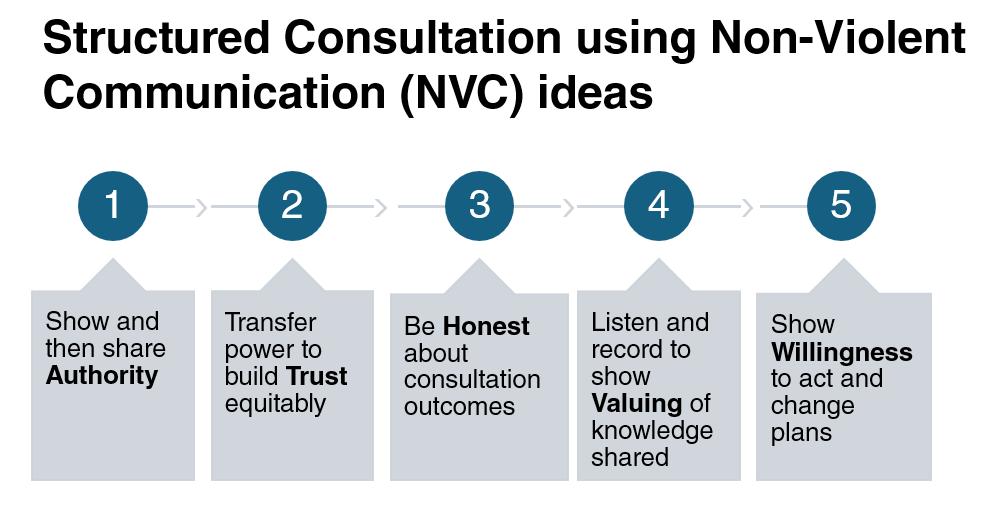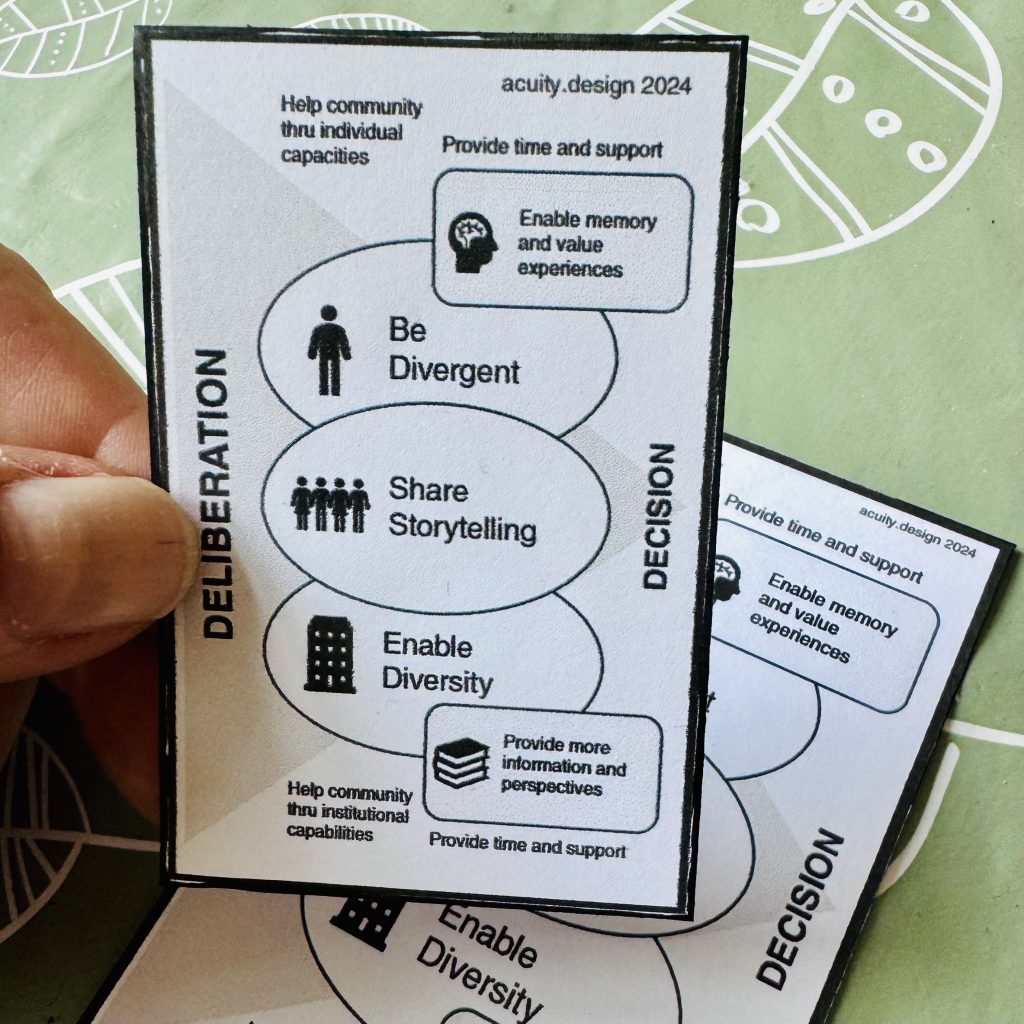The three core principles of citizens’ assemblies
Julien Vrydagh
A CA [Citizen Assembly] is a participatory institution which brings together an inclusive group of lay citizens to engage in deliberation on a public issue so as to exert a public influence. CAs hence rely on three core principles: deliberation, inclusion and public influence.
(University of Stuttgart)
I am designing and facilitating some Citizen Assemblies this autumn and, as I prefer to work in the open, I’m sharing both materials and time to talk about ideas and methods.
Citizen Assemblies are an idea that, for me, builds on my experiences in accessible design, participatory design and workshop facilitation. The ideas mentioned in the quotation above about inclusion and public influence are critical in codesign work where power and privilege imbalances need to be explicitly discussed.

The actuality of deliberation leading to influence is something that has come up regularly in government consultation work where I provide accessible materials. This diagram on Non-Violent Communication in Structured Consultations is relevant to Citizen Assemblies in the senses of being explicit about power transfers and willingness to change.

Updates
Working thru the books, I have some draft ideas for the workshops I am facilitating.
A workshop flow that weaves between group, personal and organisational streams of purpose. The facilitation is thus more in the stream crossing than directing the stream itself.

This leads on the issue of creating a just space for storytelling and listening as a group.

The facilitation is thus in a directed shifting of group towards their individual memories and capacities and towards the organisation’s capabilities in providing more information and perspectives.

Deliberation not decision

As the process of working with client has moved along, the purpose of the sessions has shifted from enabling and recording a shared decision to enabling and tracking individual deliberation.
The diagram above shows the process we expect to use in the sessions.
Materials
The quotation at the start of this post comes from a very big academic book on Citizen Assembly ideas and critiques. It is De Gruyter Handbook of Citizens’ Assemblies and you can buy a copy or download it for free on the DeGruyter website.
A shorter place to start is the UK guide How to run a citizens’ assembly which is on my Dropbox.
This article Involving the public in policymaking… is useful too
Finally, the book Lifehouse by Adam Greenfield is helpful in understanding the broad context of communatarianism and where CA are placed within that sense of politics and community.
If you have any recommendations or experiences, please share in comments or come along to the Zoom meeting.
Updates
This report Mapping Deliberative Democracy… was recommended by one of its authors Dr. Andy Williamson and is very helpful with a useful checklist in the Appendix.
A new book has just been published by Routledge Activated Citizenship which also analyses a number of Citizen Assemblies. It starts with the idea of Voice which links well to another book I was recommended called Giving Voice to Values which has practical exercises on speaking truths in groups.
This diagram comes from Activated Citizenship and its opening ideas of what CA’s do.

Here is an article about Civic Assemblies by Dru Haynes on the North East Bylines site: What are citizen assemblies and how can you have your say?
Also look at Citizen Assembly Tracker for a list of what has happened in UK.
If you would like an anti-citizen assembly perxpective then this new article by Melanie McDonagh is straightforward: The sham of an assisted dying ‘citizen’s assembly’. It is more about the assisted dying debate but the points about civic assemblies are still valid.
From the Transition Movement work, the Extinction Rebellion Guide to Citizen Assemblies and link to Assemble movement.
Happy to chat about ideas
If you have ideas or resources to share then please contact me.
I am happy to share other links I have and chat if you like.